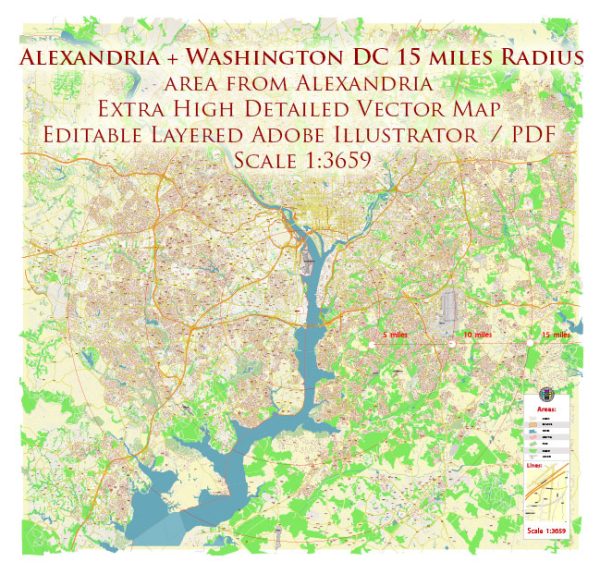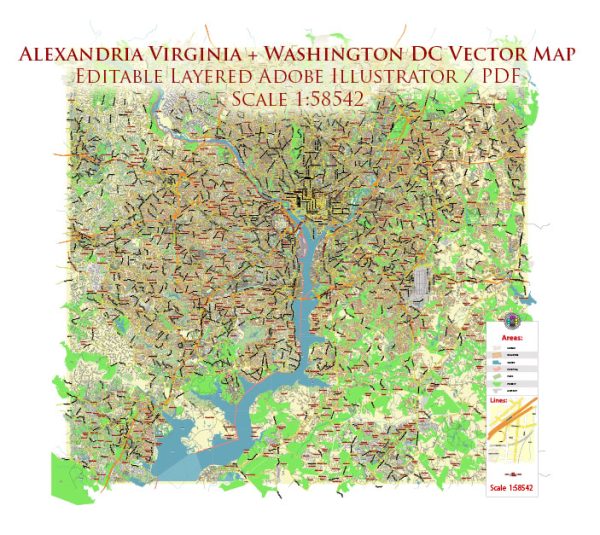The economic history of Alexandria, Virginia, and Washington, D.C., is closely intertwined due to their geographic proximity and historical development.
Vectormap.Net provide you with the most accurate and up-to-date vector maps in Adobe Illustrator, PDF and other formats, designed for editing and printing. Please read the vector map descriptions carefully.
Here’s a brief overview of their economic histories:
Alexandria, Virginia:
Colonial Period:
- Alexandria was founded in 1749 by Scottish merchants.
- It quickly became a significant port, benefiting from its location along the Potomac River and proximity to the Chesapeake Bay.
- Tobacco was a major export, and Alexandria became a thriving trading center.
19th Century:
- The city continued to grow in the early 1800s, with the expansion of trade, commerce, and manufacturing.
- The construction of the Alexandria Canal and the Alexandria and Washington Railroad enhanced transportation links.
- However, during the Civil War, Alexandria found itself on the front lines, leading to economic disruptions.
20th Century:
- Alexandria’s economy diversified in the 20th century, with the growth of federal government employment and the defense industry.
- The Old Town historic district became a focus for tourism and commercial development.
- In the latter half of the century, the city experienced urban renewal efforts, leading to redevelopment and modernization.
Washington, D.C.:
Late 18th Century:
- Washington, D.C., was established as the nation’s capital in 1790, bringing with it government institutions and economic activity.
- Early economic activities included trade, services, and some light industry.
19th Century:
- Throughout the 19th century, Washington’s economy continued to be shaped by government functions.
- The Civil War brought economic growth to the city, as it became a major supply center for the Union Army.
20th Century:
- The federal government remained a dominant economic force, but the city’s economy diversified.
- The New Deal programs of the 1930s had a significant impact, creating jobs and infrastructure projects.
- The post-World War II period saw a boom in federal employment, and the city’s population grew.
- During the latter half of the 20th century, Washington, D.C., faced challenges like urban decay and racial tensions.
Late 20th Century to Present:
- The 1980s and 1990s witnessed economic revitalization, with investments in downtown development, cultural institutions, and tourism.
- The technology sector, particularly in Northern Virginia, experienced substantial growth.
- The 21st century saw the continued expansion of the government and the rise of the knowledge economy.
Recent Trends:
- Today, both Alexandria and Washington, D.C., have vibrant economies, with a mix of government, technology, tourism, and service industries.
- The region benefits from its educated workforce, research institutions, and government agencies.
- Challenges include issues of affordability, transportation, and urban development.
In summary, the economic history of Alexandria, Virginia, and Washington, D.C., reflects their roles as key centers of trade, government, and industry throughout American history. The evolution from colonial trading posts to modern, diverse economies has shaped the character of these two cities.



 Author: Kirill Shrayber, Ph.D.
Author: Kirill Shrayber, Ph.D.